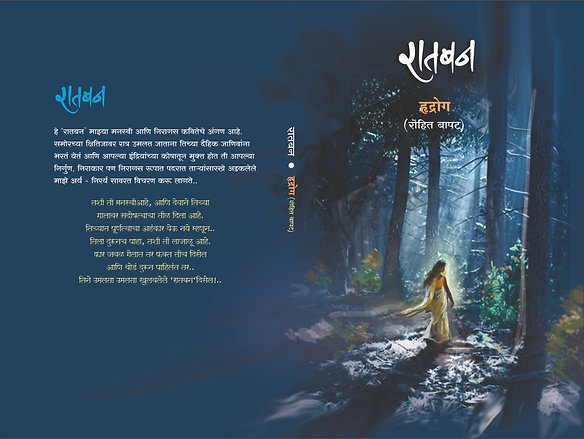Veer Savarkar was born on 28 May, 1883 in the village Bhagpur, Nashik and died on 26 February, 1966, Bombay (now Mumbai). His full name is Vinayak Damodar Savarkar. He was a freedom fighter, politician, lawyer, social reformer, and formulator of the philosophy of Hindutva.
His father’s name was Damodarpant Savarkar and mother was Radhabai. He lost his parents at an early age. He was strongly influenced by his elder brother Ganesh (Babarao).
Facts about Veer Savarkar
Name – Vinayak Damodar Savarkar
Date of Birth: 28 May, 1883
Died: 26 February, 1966
Place of Birth: Bhagpur, Nashik (Maharashtra)
Place of Death: Mumbai
Cause of Death: Fasting (Sallekhana Prayopavesa)
Father’s Name: Damodar Savarkar
Mother’s Name: Yashoda Savarkar
Wife: Yamunabai
Brothers: Ganesh and Narayan
Sister: Mainabai
Political party: Hindu Mahasabha
Religious Views: Atheist
Education: Bachelor of Arts from Fergusson College, Pune, Maharashtra
Profession: Lawyer, politician, writer, and activist, Barrister at the Honourable Society of Gray’s Inn, London
Prison Journey: Veer Savarkar was prisoned by the Britishers for about 50 years. He was shifted to Cellular Jail, Andaman and Nicobar Islands.
His famous slogan: “Hinduize all Politics and Militarise Hindudom”.
Famous as: For his contribution to the Indian Independence Movement.
Veer Savarkar and his contributions to the Freedom struggle movement
Veer Savarkar was born to a Brahmin Hindu family on 28 May, 1883, at Bhagour, Nashik District. His siblings were Ganesh, Mainabai, and Narayan. He was known for his bravery and so earned the nickname ‘Veer’ that is a courageous person. He was influenced by his elder brother Ganesh who had played an influential role in his teenage life. Veer Savarkar also became a revolutionary young man. When he was young, he organised a youth group named ‘Mitra Mela’. He was inspired by radical political leaders like Lala Lajpat Rai, Bal Gangadhar Tilak, and Bipin Chandra Pal and engages the group in revolutionary activities. He enrolled himself at ‘Fergusson College’ in Pune and completed his Bachelor’s Degree.
He received an offer to study law in England and offered a scholarship. He was helped by Shyamji Krishna Varma to sent him England and pursue his studies. He enrolled there at ‘Gray’s Inn Law College’ and took shelter at ‘India House’. It was a student residence in North London. In London, Veer Savarkar inspired his fellow Indian students and formed an organisation ‘Free India Society’ to fight against Britishers for freedom.
How was he sentenced to 50 years of imprisonment?
Meanwhile, in India Veer Savarkar’s elder brother organised a protest against the ‘Indian Council Act 1909’ also known as Minto-Morley Reform. Further, with the protest, the British Police claimed that Veer Savarkar had plotted in crime and issued a warrant against him. To evade the arrest, Veer Savarkar was escaped to Paris and there he took shelter at Bhikaji Cama’s residence. On 13 March, 1910, he was arrested by the British police but the French Government got irritated when British authorities had not initiated appropriate legal proceedings to arrest Veer Savarkar in Paris.
The Permanent Court of International Arbitration was handling the dispute between the British authorities and the French government and gave a verdict in 1911. Let us tell you that the verdict came out against Veer Savarkar and he was sentenced to 50 years of imprisonment and sent back to Bombay. Later, he was taken to the Andaman and Nicobar Island on 4 July, 1911. There, he was locked at ‘cellular Jail’ famous as Kala Pani. He was severely tortured in Jail. But his national freedom spirit continued and there he started teaching his fellow prisoners to read and write. He also took permission from the government to begin a basic library in the prison.
Work done by Veer Savarkar in the Prison
During his prison time, he wrote an ideological pamphlet known as Hindutva: Who is a Hindu?’ And this was published by Savarkar’s supporters. In the pamphlet, he described Hindu as a patriotic and proud inhabitant of ‘Bharatvarsha’ (India) and so influenced several Hindus. He also described several religions as one and the same as Jainism, Buddhism, Sikhism, and Hinduism. According to him, all these religions can support the creation of ‘Akhand Bharat’ (United India or Greater India).
He was a self-proclaimed atheist, always proud to be a Hindu, and described it as a political and cultural identity. Savarkar was released from the prison on 6 January, 1924 and played a crucial role in generating ‘Ratnagiri Hindu Sabha’. This organisation aimed to preserve the social and cultural heritage of the Hindus.
Veer Savarkar in 1937, became the president of ‘Hindu Mahasabha’. On the other side and same time, Muhammad Ali Jinnah declared Congress rule as ‘Hindu Raj’, which had worsened the already rising tension between the Hindus and the Muslims. Veer Savarkar is a president of ‘Hindu Mahasabha’, encouraged Hindus to support the British in the Second World War.
We can’t ignore that Veer Savarkar, on the other hand, was a fierce critic of the Indian National Congress (INC) and Mahatma Gandhi. He opposed the ‘Quit India Movement’ and later objected to INC’s acceptance of the Indian partition. He proposed the co-existence of two nations in one country.







 If you want to use your preferred UPI app, our UPI ID is raj0nly@UPI (you can also scan the QR Code below to make a payment to this ID.
If you want to use your preferred UPI app, our UPI ID is raj0nly@UPI (you can also scan the QR Code below to make a payment to this ID.






